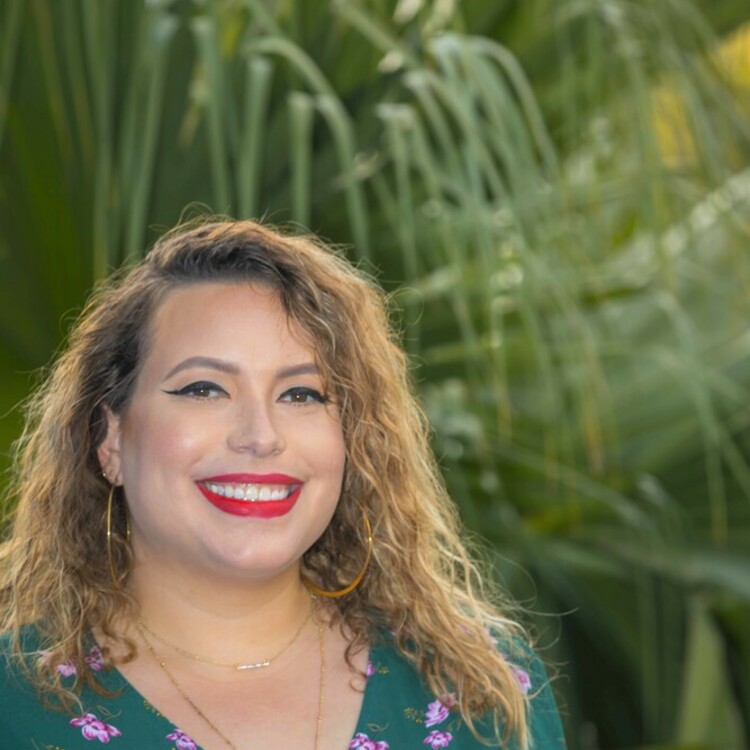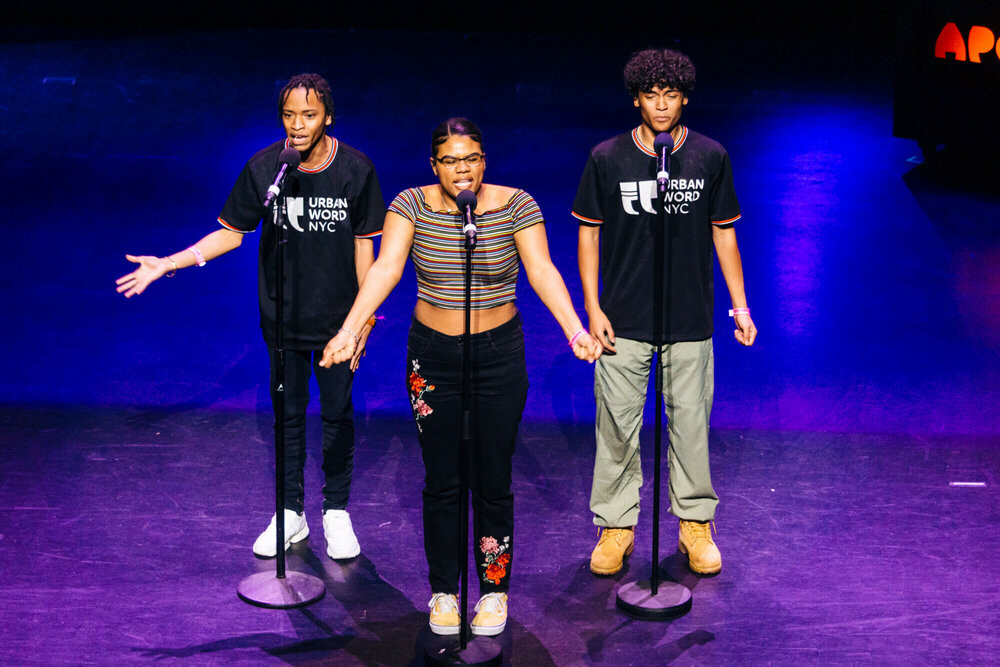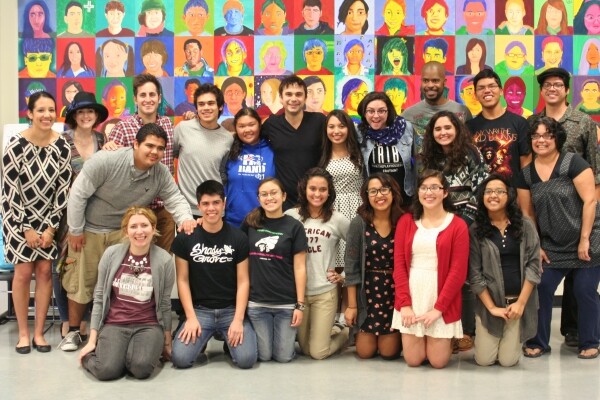The training I had received in theatre performance and administration has always helped me figure out what to do in any professional situation—except for this one. I had no idea where to go or whom to turn to. My first instinct was to find stable housing for them. I looked online for resources within the theatre field about how other organizations had handled situations like this, but could not find any. I thought, “Should I bring this person and their mother home with me?” but I had no space in my tiny apartment for two more people. I did nothing, and that bothers me to this day. I still follow this person on social media, and they are a thriving and productive artist, but I will forever feel guilty for not doing more for them when they were under my care.
Since then, I’ve wanted to find out how different organizations successfully assist youth facing various social issues, such as homelessness, abuse, food insecurity, mental health issues, foster care, and immigration. I decided late in 2019 to reach out to seven theatres from across the country that work with youth: Loud Theatre in New Orleans; Youth Empowerment Performance Project (YEPP) and About Face Theatre in Chicago; Urban Word in New York City; FRESHH Inc. Theatre Company and Young Playwrights Theater in Washington, DC; and Say Sí in San Antonio. Through my conversations with these organizations, I was able to identify similar philosophies, resources, and tools that they use to service the youth they work with. My hope is that this information will be useful for any of you who work with youth artists, helping you navigate these challenging situations.
I looked online for resources within the theatre field about how other organizations had handled situations like this, but could not find any.
Staff Training, Policies, and Philosophies
Every organization has their own policies and procedures, but all of the ones I spoke with stated they make sure their work is anti-racist and fully LGBTQ inclusive. This is necessary because 48 percent of Generation Z (ages eight to twenty-three years old in 2020) identify as people of color, 35 percent of them say they know someone who uses a gender neutral pronoun, 60 percent of them believe other genders besides male and female should be listed on government forms, and only 15 percent believe same-sex marriage is bad for society.
Some of the ways the theatre organizations I spoke with have made their spaces more LGBTQ inclusive is by listening to and understanding what is going on with the youth they are working with, and also being careful about how they communicate that information to others. For example, if a young person starts using a different name and/or gender pronoun, or has opened up about their sexuality, staff needs to know if the youth is out to their family to make sure that they—or any other staff member—do not accidently out them. artEquity and the People’s Institute for Survival and Beyond are two good resources organizations use to help them make their spaces more inclusive to all people.
Several organizations mentioned their staff receive training to help them best address issues such as youth experiencing homelessness and abuse. For example, Farah Lawal, the artistic director of Young Playwrights Theatre, has received mental health and first aid training; Amy Sheahan, the interim education program manager at About Face Theatre, has received training in de-escalation work; and Young Playwrights Theatre partnered with the healthcare organization Kaiser Permanente to offer training in trauma sensitivity in learning environments for their teaching artists.
If you work at an arts organization, you need to find out whether your organization is mandated to report things like abuse, abandonment, or drug use, which the young artists may be experiencing at home, to the authorities, like Child Protective Services or the police. Several of the organizations I spoke with must report, but others, including About Face Theatre and YEPP, intentionally do not due to the demographics of the youth they work with—LGBTQ youth of color. These young people statistically do not fare well once they are put into the system or have to interact with law enforcement, as these systems tend to be transphobic and are harmful and traumatic to people of color. If your organization is not mandated to report anything, you can create your own policies and procedures that allow you to handle issues internally, such as working with mental health therapists or connecting with local food banks or homeless shelters.
If art isn’t being made, then no one is getting the services they need or want.
Identifying Local Resources
Each of the organizations I spoke with mentioned one particularly invaluable resource they used: a self-made internal document that includes information about local agencies, organizations, and people who assist youth who face social issues on a regular basis. These are folks—such as social workers, therapists, and lawyers—who are trained to handle provide young people with the best care.
If you’re going to create your own document, it’s important to make sure you or the theatre you work for has a good relationship with the people you’re including. Bonsai Bermudez, the executive and artistic director of YEPP, said: “In order to be a competent advocate, you have to be involved with the resources network of the city you are in.” This also allows staff to lean into what they do best versus serve as case workers for the youth. If art isn’t being made, then no one is getting the services they need or want.
It is also necessary to make sure the list is carefully curated and that it includes resources that will not be harmful or cause even more trauma to the youth. For example, are the organizations LGBTQ friendly and safe spaces for undocumented youth? Are they affiliated with law enforcement in any way? These questions are especially important if the youth you service do not identify as cisgender, straight, documented, or white. You can usually ask the youth themselves if they have had a good experience or heard anything good or bad about a particular organization, as they or someone they know may have already been in contact with them.
Creating Safe Spaces for Difficult Conversations
All of the organizations I spoke with offer youth programming year-round and noted two important qualities theatremakers need to possess so they are best able to identify signs that the youth in their care are struggling: observation and listening.
When devised theatre is part of the youth programming, organizations noted that sometimes during the process young people mention issues they are facing, either by saying it out loud to the group during weekly check-ins or hinting at it in their writing. If staff members are paying good attention, they will pick up on this and can take the young person aside, asking them if they are comfortable speaking a bit more about what they shared. The staff members can then evaluate how to best assist this youth, which may include looking at their internal document to connect the young artist to a social worker or therapist.
One thing that’s important for all artistic leaders is knowing where the boundaries lie when it comes to assisting youth.
About Face Theatre and Say Sí both offer programming that the same youth are involved in year-round. This allows staff to really get to know the young people they are working with, which means they may better be able to notice when something is off. Say Sí is even more unique in that the youth they work with start the program at thirteen years old and complete it when they are eighteen years old. This allows the staff to grow an even deeper relationship with the youth, and they are able to jump in quickly when they become aware of a crisis as well as provide continuous assistance over the years.
Sometimes, youth are much more comfortable sharing with their peers. To address this, About Face Theatre has a Youth Task Force comprised of leaders from their ensemble. These leaders check in with their peers, which can let them know if anyone is struggling. The Youth Task Force members then report back to the staff and work together to see how to best address the young person’s needs. Also, because the ensemble and the Youth Task Force are made up of youth ranging from ages twelve to twenty-three, there is a lot of sharing among young people who have had similar experiences throughout different times in their lives.
Finally, Lawal suggested that sometimes artistic leaders need to have difficult conversations with young artists. For example, if young artists are unable to fulfill the obligations of their creative work due to the issues they are facing at home, leaders may need to ask them to take a step back to focus on resolving those issues first. Artistic leaders can check in on them over time and let the young people know they are always welcome back, but that their first priority needs to be their health and making sure they are doing well in school. This is, in a way, what adult theatremakers should do with professional artists who are struggling. Many times, the programming theatres offer youth is meant to mimic professional theatre, so that youth artists gain experience and understand what the art form requires as a professional. And sometimes creating and producing art means looking out for what’s best for the artists, too.
Financial Compensation and Other Support
Loud Theatre, an LGBTQ youth-focused company, works to provide financial compensation to their youth artists. Rachel Lee, who serves as one of the co-directors, stated they pay all of their youth ensemble members $15 per hour. This means there’s a limit to the amount of hours the young people work so the theatre can afford to pay everyone a living wage, but the choice acknowledges the creative labor young people put in and helps mitigate the class disparities that prevent some youth from participating in these programs.
Through the support of parents and staff members, the organization also provide transportation to and from the theatre, since public transportation in New Orleans is not safe for LGBTQ youth of color. They also provide full meals at all meetings, rehearsals, and performances. Loud Theatre was able to find out where their youth artists were struggling and implemented programs that would help them. By surveying your youth artists, you can see where they are struggling and how your organization can fill those gaps.




Comments
The article is just the start of the conversation—we want to know what you think about this subject, too! HowlRound is a space for knowledge-sharing, and we welcome spirited, thoughtful, and on-topic dialogue. Find our full comments policy here
Thank you for this!
I, too, have been frustrated by the lack of documentation in our field of best practices for helping the young people we work with. I think perhaps the companies doing the best work to support youth are too busy to write about it. We need grants for researchers to embed and document the best that's out there so all organizations have resources.
I'm curious: Did you have the opportunity to talk with Albany Park Theater Project in Chicago about their comprehensive work with youth in their community? They are one company that could fill a book with best practices and lessons learned.
I'm also curious if you know of any programs in the Seattle area. I'm still finding my footing here and I'd like to work with an organization that takes into consideration the issues, resources and methods you mention here.
Hi Yvette,
I actually did reach out to Albany Park Theater Project, but unfortunately, they were unable to speak with before publication of this article. I didn't find any information about any companies in Seattle, but I would ask your Facebook networks. Honestly, that is how I found out about many of these companies.